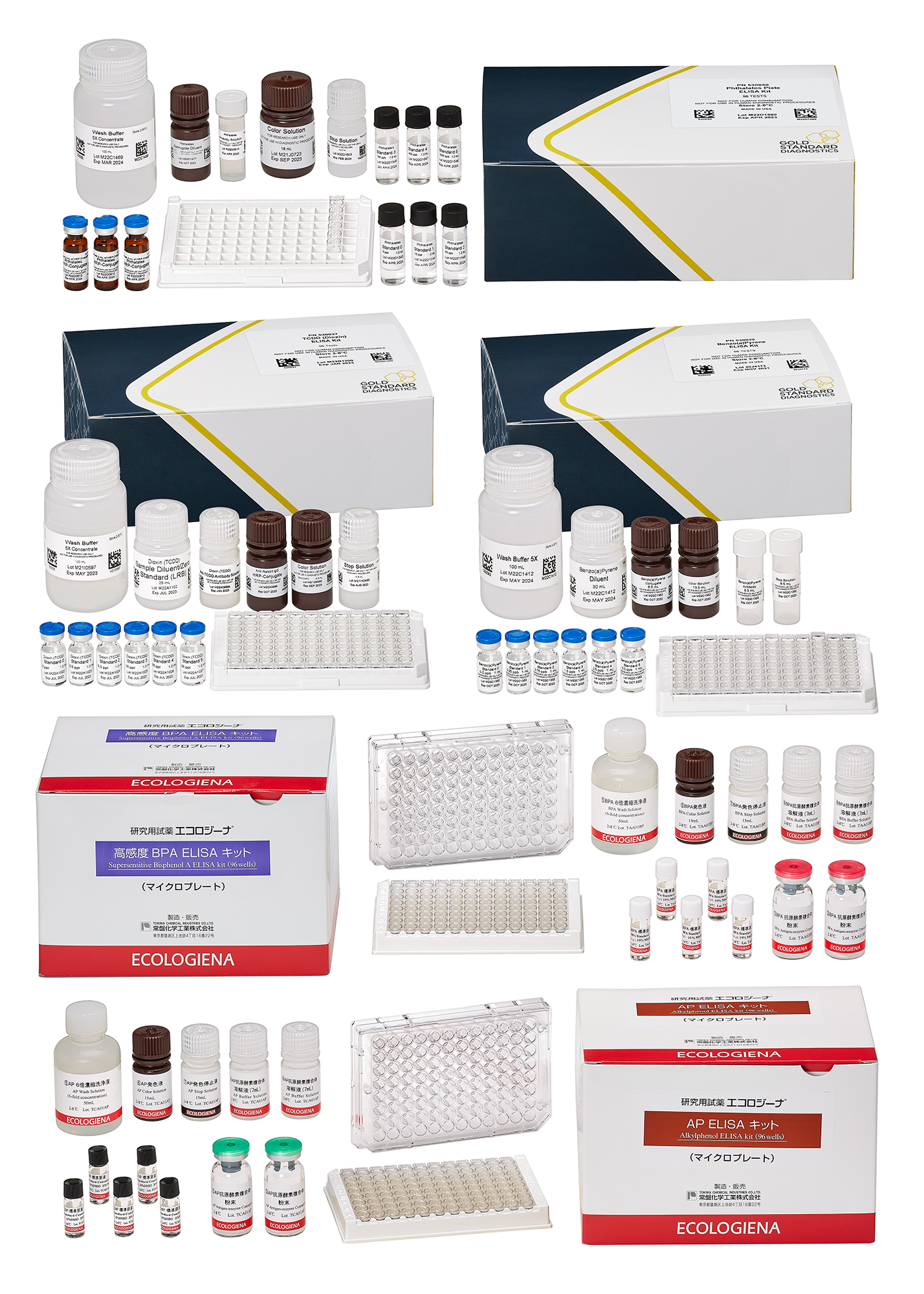Bisphenol A (BPA), ELISA, 96-test
Request InfoThe Bisphenol A (BPA), ELISA is an immunoassay for the qualitative screening detection of Bisphenol A (BPA).
Kit Principle
Competitive Reaction: The test is based on the recognition of BPA by specific monoclonal antibodies. BPA present in the sample and a BPA-enzyme conjugate (i.e. BPA labeled with a coloring enzyme:HRP) are premixed and added into each well of a microplate, and allowed to compete for limited number of binding sites of specific antibodies immobilized on the surface of the wells. When the BPA concentration is higher relative to the enzyme conjugate, the BPA will predominantly bind the antibody and vice versa.
Chromogenic Reaction: Unbound BPA and excess BPA-enzyme conjugates are washed out. The presence of BPA is detected by adding a chromogenic substrate:TMB. The enzyme-labeled BPA bound to the BPA antibody in the plate, catalyzes the conversion of the substrate to a colored product. After an incubation period, the reaction is stopped by the addition of a diluted acid. The higher the BPA concentration in a sample, for example, leads to less antigen-enzyme conjugate bound to the antibody binding sites in a microplate well, generating a lighter color, i.e. lower absorbance.
Quantitative Analysis: The standard curve, a dose-response curve obtained from known concentrations of BPA standards, is determined from the absorbance at 450nm. The BPA concentration in each sample is accurately calculated by interpolation using the absorbance intensity obtained from the standard curve.
PN 590023
Made to Order - Minimum Order Quantity 5 Kits
Format: 96-Well Plate ELISA
Images

